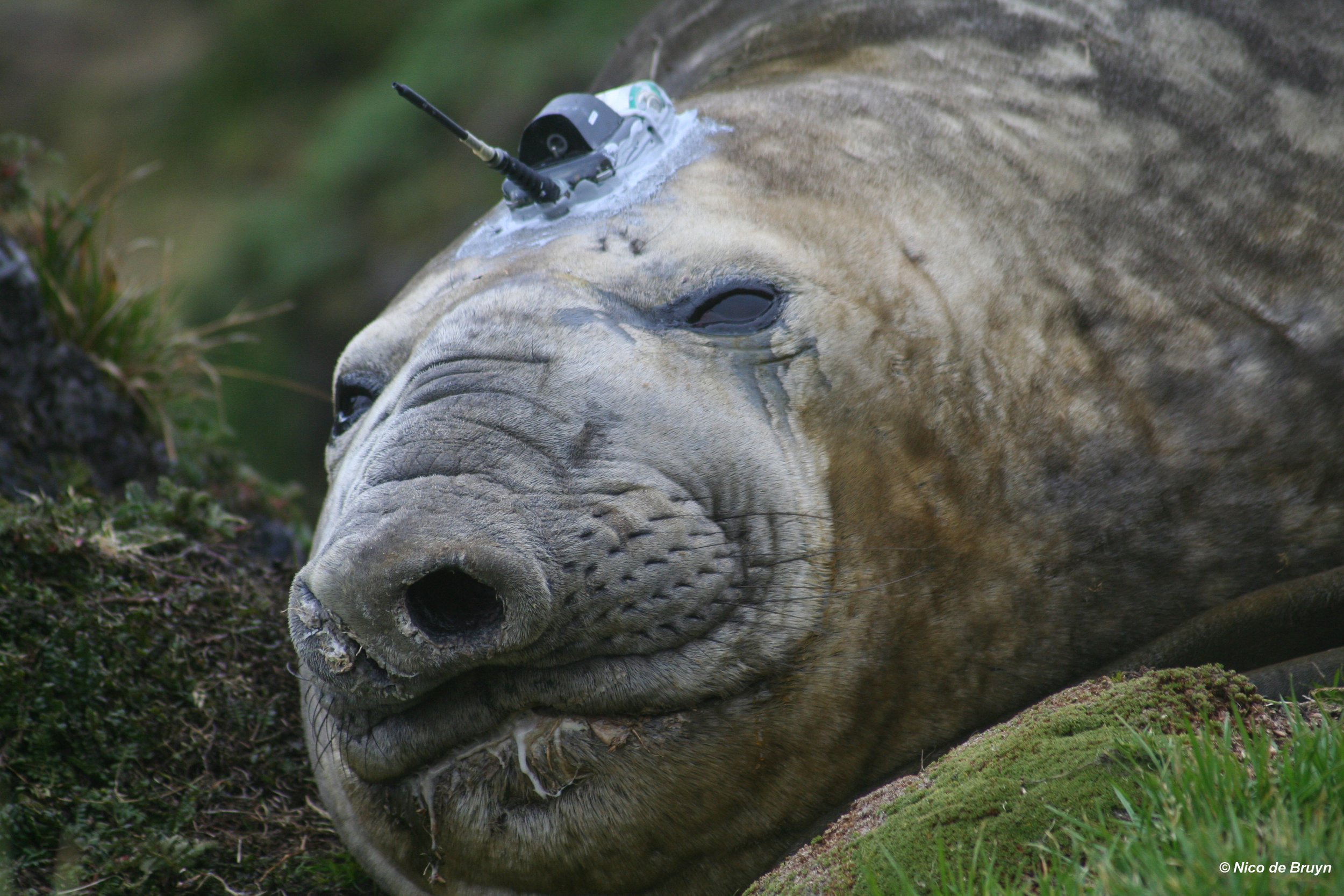NEW PAPER: Long-term population demographics of Marion Island killer whales
/NOTCHES AND SCRATCHES MAKE IT POSSIBLE FOR RESEARCHERS TO IDENTIFY INDIVIDUAL KILLER WHALES. THIS IS M002 CLOSELY FOLLOWED BY HER 3-YEAR OLD CALF, M062 BORN INTO THE POPULATION IN 2014. PHOTO CREDIT: ROWAN JORDAAN.
In the latest MIMMP research published in Wildlife Biology, PhD student Rowan Jordaan analysed nearly 90 000 photographs (taken over 4739 sightings) to assess the abundance, survival and population growth of the Marion Island killer whale population.
Since 2006, our over-wintering researchers have conducted dedicated killer whale research at Marion Island in the Southern Ocean. Killer whale research here is unique in that all observations are shore-based, with killer whales observed swimming in deep water close to cliffs and in shallow waters leading onto beaches where their prey (seals and penguins) haul out.
A photographic identification catalogue has been maintained over the last 14 years through structured dedicated observation sessions and opportunistic sightings of killer whales. Unique notches and scratches on killer whale dorsal fins enable individual identification.
To date, 67 individuals are present around Marion Island including 19 calves born into the population since 2006. Eight individuals have also been observed at the nearby Îles Crozet (~ 950 km away). This research revealed that killer whales at Marion Island have an annual survival probability of 0.98 equating to an approximate life expectancy of 48 years. This population has a healthy mean growth rate of 1.012 and a calving rate of 0.13 calves born per year per reproductive female.
AN OBSERVER TAKES PHOTOS OF A KILLER WHALE passing THE OBSERVATION POINT. SHORE BASED OBSERVATIONS MAKES MARION ISLAND KILLER WHALE RESEARCH UNIQUE. PHOTO CREDIT: YINHLA SHIHLOMULE.
These population parameters are similar to those of other killer whale populations in the Eastern North Pacific, Norway and Îles Crozet. Observed variations are attributed to dietary difference and resource abundance, historical negative impacts on social structure (e.g. mortalities caused by illegal fishing vessels), environmental conditions and the presence and scale of legal and illegal fisheries. Fisheries may provide opportunities for direct interactions with vessels resulting in variable impact on survival and reproduction rates.
These findings increase our knowledge of killer whales in the Southern Ocean, an area that is surprisingly understudied. A population study of this caliber and detail would not have been possible without the continuous and long-term research effort by MIMMP and the numerous field assistants that have contributed to this data set over the years.
A mother and young calf observed from the cliffs above. photo credit: Rowan Jordaan.




















